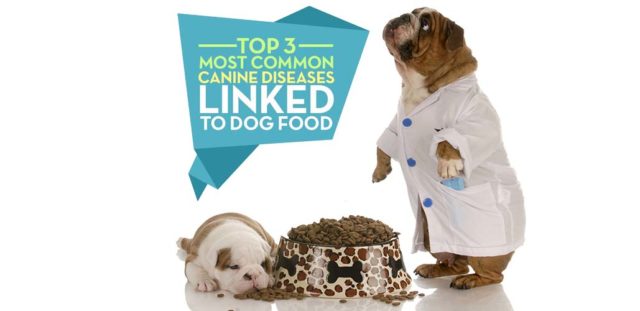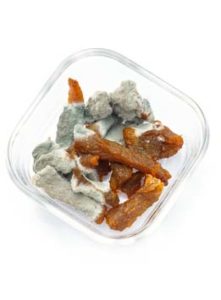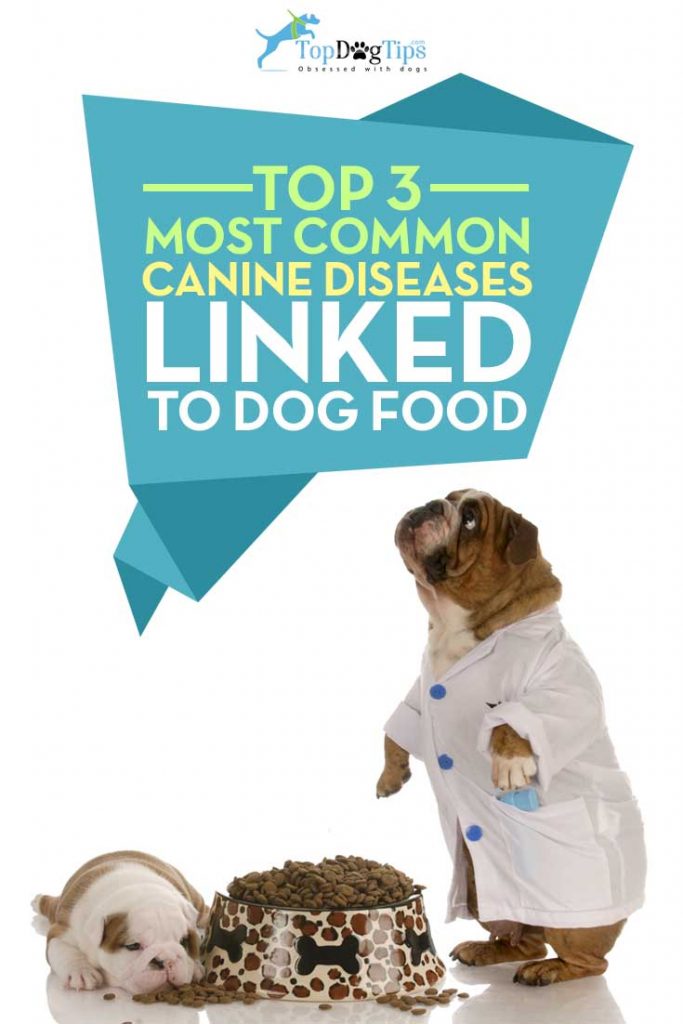
As humans concerned with our health, we know that there is a connection between the food we eat and how we feel.
The same level of attention should be applied to our dogs' diets. There are three very common dog diseases that are linked to dog food and nutrition you must be aware of.
Pet owners on a budget are forced to buy dog food based on the price tag and how well-known the brand is (how good the company is at marketing).
Many forget the importance of analyzing the specific ingredients of that food, and it all makes the dog feel in the long term.
There are hundreds of different dog food diets, recipes, and formulas available. Some owners choose to make their own homemade dog food.
But regardless of what you do, paying specific attention to how these foods and ingredients affect the dog's daily life is essential, even if your pooch enjoys the smell and taste of his kibble.
There are ways to find good quality food for the money if you do your research well. In this article, I'm going to take a look at the three most common dog diseases that have been directly linked to poor-quality dog foods or bad nutrition.
Knowing about this may help you make better choices and avoid future health problems in your dogs.
Dog Diseases Linked to Dog Food

1. Allergies and Skin Conditions
There's a lot of talk about buying dog food that doesn't have “fillers” like corn, wheat, or soy.
Most of the argument for this is that fillers in dog food just make your dog feel full without providing any nutritional value (more on this later).
But from talking to dog owners, I understand that for many, that's simply not a strong enough reason to buy the more expensive, “fancier” dog food brands that claim to not have fillers or otherwise be healthier for the dog.
The real danger with these byproducts-ridden and grain-filled foods is that they actually get contaminated with insects from harvest, mold spores from poor storage facilities, and even dust mites that settle in the storage and processing facilities.
Experts are already saying that better pet food manufacturing practices are needed.
Nutritionally empty fillers used in dog food are some of the lowest quality to begin with.
Usually, it's the rejection of meats, grains, and crops that aren't fit for our own human consumption but are somehow labeled to be fit for dogs.
These contaminants can be found in almost all dog food and cause dog diseases related to allergies, like:
- Itchy skin
- Red, watery eyes
- Scaly, patchy skin
- Balding or thinning of fur
- Ear redness or infections
Years of constant allergic reactions to food can cause blackened skin and necrotic wounds.
If your dog has been diagnosed with atopic dermatitis, allergies, or any of the above problems, you should look into the quality of the food your pooch consumes.
“If you go that route, you really have to make sure the study will be published regardless of the results, and not just sort of tucked away if the results aren’t favorable (to the pet food company).”
Dr. Karen Becker has interviewed a board-certified veterinary nutritionist, Dr. Danielle Conway, who's been working on a pilot study of how processed pet food causes dog diseases and other issues in pets (video here).
A lot of it is also related to advanced glycation end products (AGE), which are compounds that are formed after the pet food in the manufacturing plant has gone through heat processing.
This may be the cause of many dog diseases related to foods due to how dogs process AGE.
2. Cancer
Cancer is one of the worst dog diseases linked to dog food that we observe these days. While there isn't as much research on the causes of canine cancer as there is on human cancer, over the last few decades, more studies have come out.
 It has been found that one of the biggest causes of canine cancer is, in fact, the food our dogs consume and the overall nutrition that we ensure for dogs. A lot of this is related not only to poor manufacturing and high levels of processing but also to poor quality control and sanitary practices in pet food manufacturing plants, according to industry experts.
It has been found that one of the biggest causes of canine cancer is, in fact, the food our dogs consume and the overall nutrition that we ensure for dogs. A lot of this is related not only to poor manufacturing and high levels of processing but also to poor quality control and sanitary practices in pet food manufacturing plants, according to industry experts.
Foods that are not quality-controlled contain high levels of the following:
- Mold spores – The high presence of mold spores in dog food creates aflatoxin, which generates a poisonous level of chemicals that encourage cancer growth. Researchers believe this is the cause of the majority of premature death and cancer in dogs.
- Pesticides – Since many of the grains and crops used in pet food are of lower quality, they are often soaked in pesticides that don't just go away. Your dog might be consuming toxic pesticides, which have been connected to brain tumors and bone cancer in mice in a number of studies.
- Food dyes and additives – Food colorings like Blue 1 and 2 have been linked in studies to tumor growth and raise other health concerns, but many dog food brands still use them in their ingredients because they remain FDA-approved.
- Monosodium glutamate (MSG) – MSG has also been connected to severe reactions in humans, and findings show that the more MSG in canine food, the higher rates of cancer in the dogs who eat it.
While sometimes dog diseases and particular canine cancer have other causes, it is worth looking into the ingredients in your dog food and understanding the brand and how the company's factory manufactures that food.
Once a dog has cancer, it's already too late, so prevention (through proper and safe nutrition) is absolutely the best cure here.
3. Obesity
 According to the Association for Pet Obesity Prevention, over 60% of all dogs are overweight or obese. Canine obesity creates many problems, not least of which is an abundance of additional dog diseases that may be very difficult to treat.
According to the Association for Pet Obesity Prevention, over 60% of all dogs are overweight or obese. Canine obesity creates many problems, not least of which is an abundance of additional dog diseases that may be very difficult to treat.
Poor nutrition and bad foods are the most common causes of obesity and related dog diseases, but it's also the easiest to prevent.
The Bark magazine has a great article explaining this in more detail right here.
Obesity can lead to further dog diseases like:
- Degenerative joint disease and osteoarthritis
- Cardiac disease, including congestive heart failure
- Kidney disease
- Liver disease and failure
- Type 2 Diabetes and insulin resistance
- Hypothyroidism
Preventing this is possible and not very difficult.
While regular exercise is highly encouraged for many other reasons as well, the best and easiest way to prevent obesity is to feed the right type of foods as well as the right amount.
Next time you go dog food shopping, look for filler ingredients like corn, wheat, and soy; any byproducts or meat meals that the company tries to hide (not all meat meals or byproducts are bad). Those are the main culprits in the pet obesity epidemic, but also look at ingredients like:
- BHA/BHT – BHA (butylated hydroxyanisole) and BHT (butylated hydroxytoluene) preserve the fats found in dog food but are so chemical-based that the food can’t break down, and the energy is stored as fat. Get dog food without these additives if you can.
- Carbohydrates – Many dog food brands use rice, sweet potato, “organic” corn or wheat, and other carbohydrates to fill up a dog without using high-cost meat. This means our dogs get carb-loaded but receive little to no nutrition. Get dog food with lean meat protein instead. I personally have seen a huge difference in my dogs’ energy levels since finding a food that starts with meat as the first ingredient.
- Sugar – Some dog foods and dog treats have started introducing high levels of “natural” sugars into their ingredients list. This isn’t so surprising because, of course, it makes the food taste even better. However, dogs do not process high levels of sugar well. Sugar does not provide any valuable nutrition, and thus, overfeeding is easy.
RELATED: How To Slim Down an Overweight Dog + 30-Day Diet Plan













